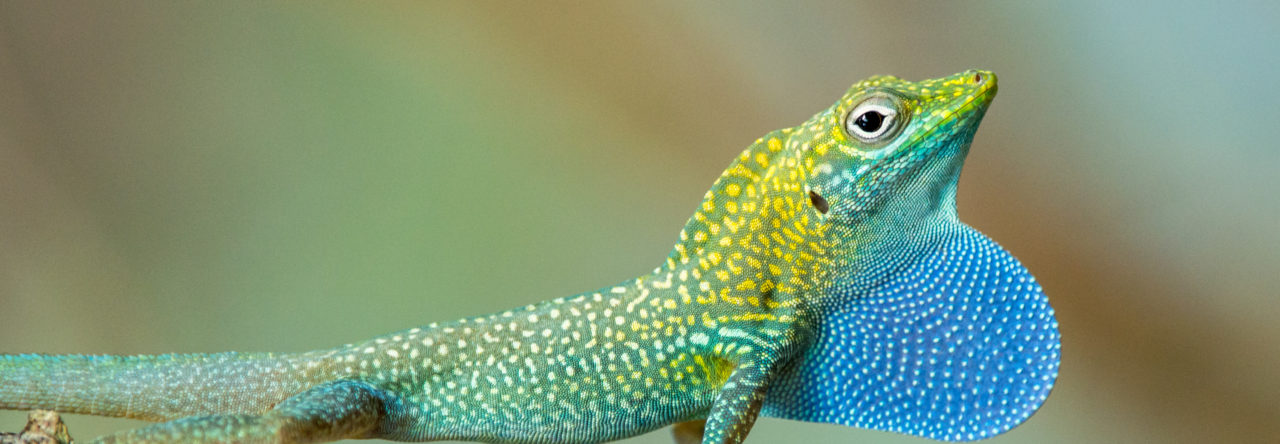It’s time to provide the answers to last week’s quiz, and this reporter–an amateur at creating such events–must admit to having egg on his face. First, though, congrats to WEs and Joe for their astute observations and conclusions. As Joe surmised and Wes speculated, the photos are both from the Bahamas, Staniel Cay to be exact.
The first photo has not three, but four anoles! Well, 3 1/2 to be exact. And the 1/2 anole is crucial. The obvious green anole is A. smaragdinus, the two upper ones are A. distichus, and the bottom half anole–predicted by Joe–is A. sagrei.
I actually meant to use a better shot of A. sagrei, shown below, and I hadn’t even noticed the presence of the distichus on the left, but when selecting photos from my album, I chose the wrong one. Sorry about that!
The evolutionarily interesting aspect, as Joe said, is that in the Bahamas, parts of two evolutionary radiations are intermixed. A. sagrei, A. smaragdinus, and also A. angusticeps, are three ecomorph species (trunk-ground, trunk-crown, and twig, respectively) that evolved on Cuba. Anolis distichus, however, is a trunk anole from Hispaniola that has inserted itself ecologically amidst the three Cubans, occupying the same sorts of habitats and behaving the same way it does in Hispaniola, where it co-occurs with home-grown members of the same ecomorph types.
The second photo has three A. sagrei. The cool one is in the background, flashing its orange dewlap. The impossible one is in the upper right. I am absolutely positive there was an anole there, because I snapped the photo to include all three, but for the life of me, I can’t make it out in that blob. Sorry about that. As for Joe’s lizard in the middle of the photo, I don’t see it, but it could very well be there.
I’ll do better next time!
And what better occasion to announce the Four Anole Challenge? Anyone who can snap a picture–authentically from nature, without manipulation–of four recognizable anole species in one frame, wins a free copy of Lizards in an Evolutionary Tree. But no nature fakes. You’re on your honor. Good luck, and may be the best anole photographer win.
- Evolution in Real Time on Lizard Island - March 23, 2025
- Spider Snags Adult Anolis osa - March 22, 2025
- An Homage to the Green Anoles of New Orleans - March 21, 2025





chipojolab
I imagine that your photo context excludes Florida. Correct?
Jonathan Losos
No, sir. Photos from anywhere are accepted. The only proviso is that the photos must be anoles in the wild, not arranged, staged or manipulated in any way.